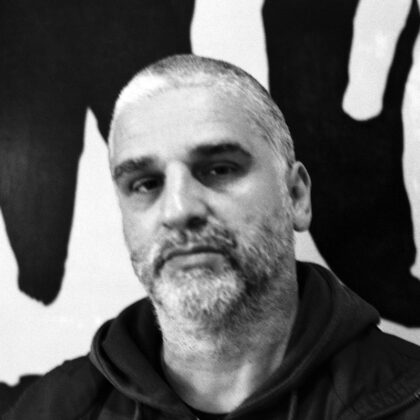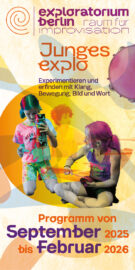In 2022, the Belgian drummer, percussionist, and musical thinker Eric Thielemans published On Resonance: Scores, Notes & Conversations. As a guest in our key_concepts series, he will read from the book and offer insights into his artistic research on resonance, perception, and spatial sonic qualities. In conversation with Mathias Maschat, he discusses working methods, the relationship between listening and action, and those subtle zones between sound and silence that have occupied him for many years. The audience is invited to perform one of his open scores together with him – not as a musical demonstration, but as a simple practice of listening and responding within a space. The evening concludes with a solo set in which Thielemans unfolds his precise, physically grounded yet restrained percussion language, also revisiting his widely noted work A Snare Is a Bell.
Thielemans’ work is shaped by a sustained investigation of resonance – as an acoustic, spatial, and social phenomenon that connects our experience of sound, body, and environment. In projects such as r-e-s-o-n-a-n-c-e, he explores the everyday magic that emerges from the interplay of inner experience and the outer world, inviting people to make it perceptible together. His practice operates at the intersections of improvisation, experimental music, and performance. He is known for resonant solo works such as A Snare Is a Bell, Sprang, Aural Mist, and Bata Baba Loka, as well as for collaborations with influential figures in free and improvised music, including Mika Vainio, Charlemagne Palestine, Oren Ambarchi, Billy Hart, Laurie Anderson, Marshall Allen (Sun Ra), Chantal Acda, and many others.
Thielemans leads the masterclass Techniques of Resonance at the AP School of Arts Antwerp and connects his artistic practice with research: In projects such as The Color in Shadow, he investigates the subtle resonances that arise in the spaces between things, tones, and people. His work demonstrates how sound, body, and space can become a relational and aesthetic field of experience in which listening, attention, and collective action play central roles. His artistic approach combines a precise instrumental practice with a pronounced interest in perception, energy, atmospheres, and the in-between spaces where sound and attention shape one another.


